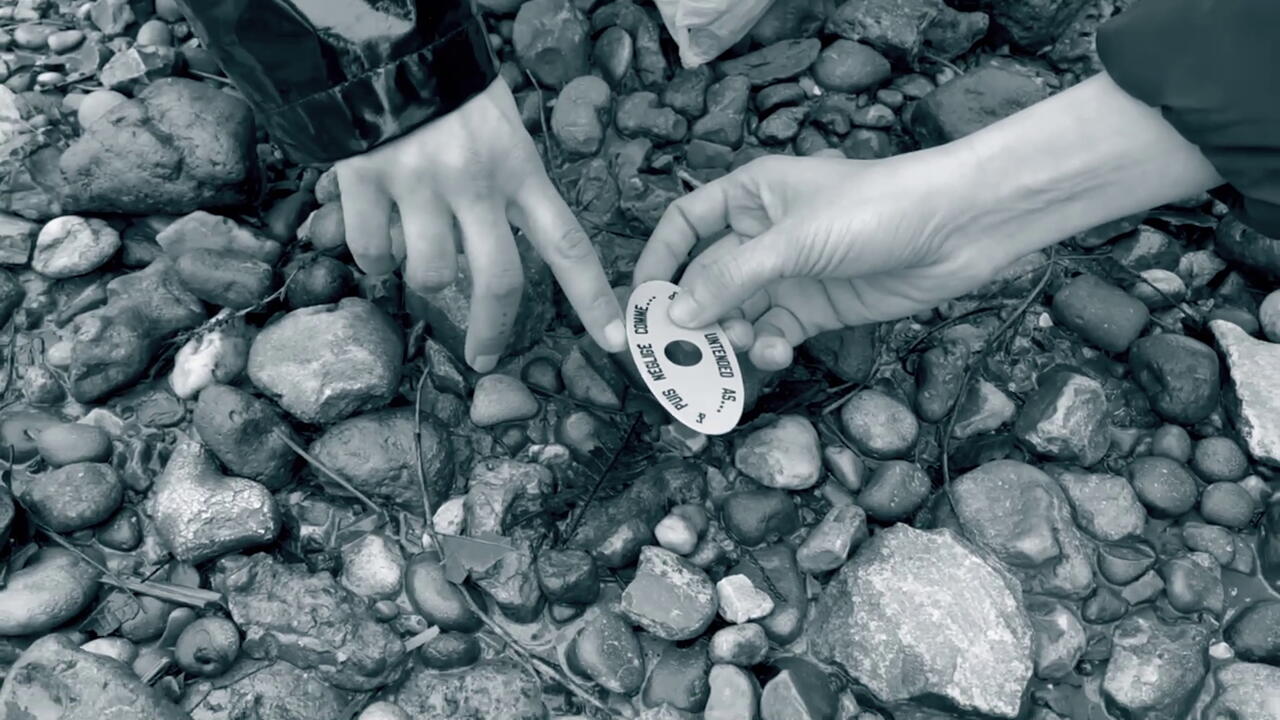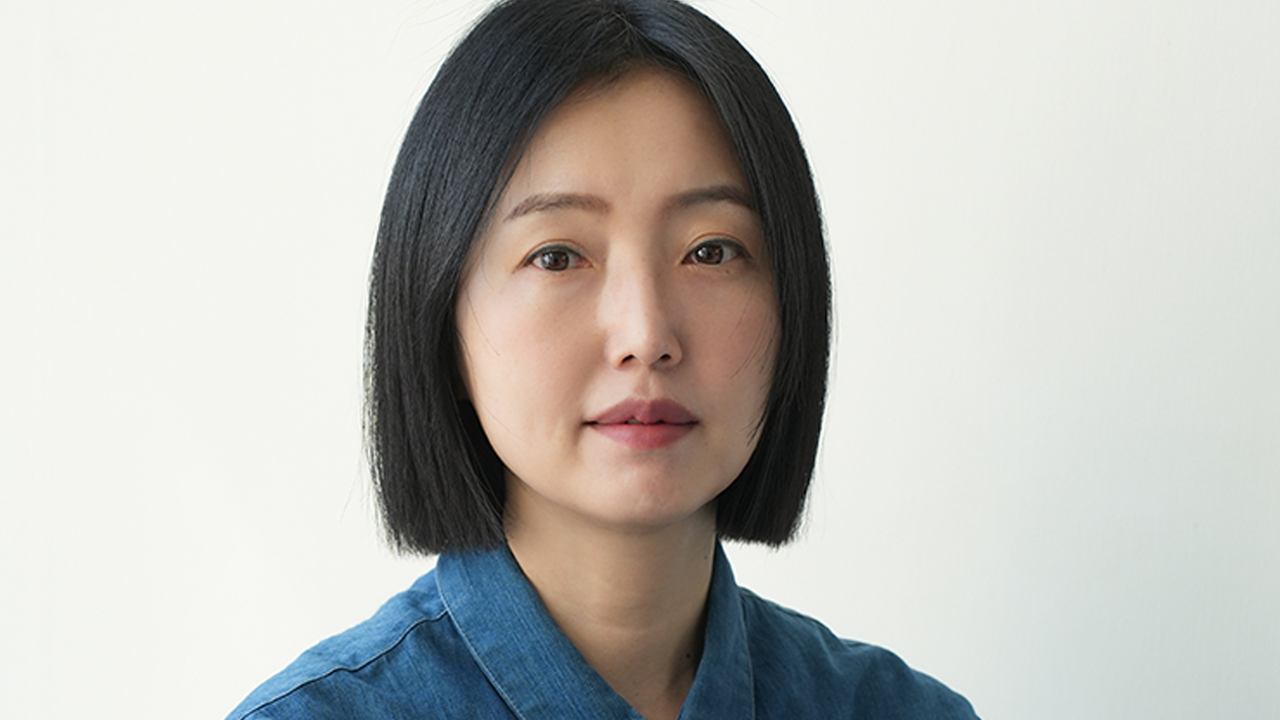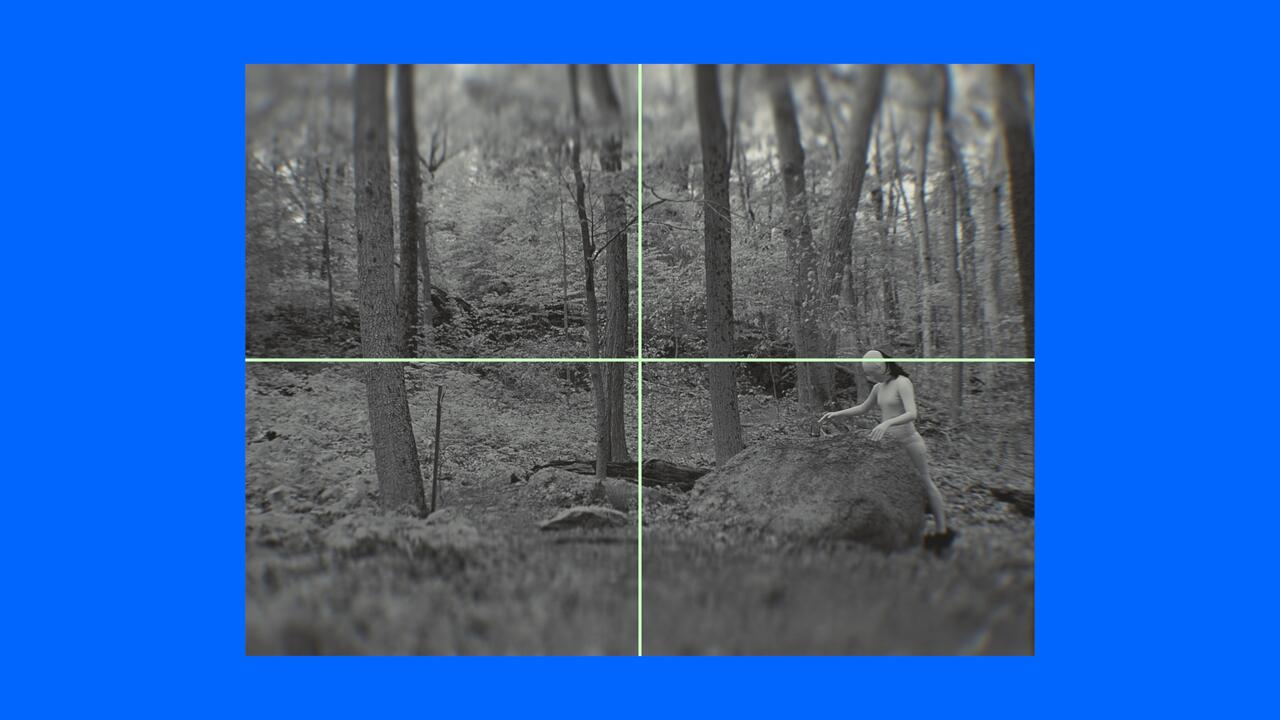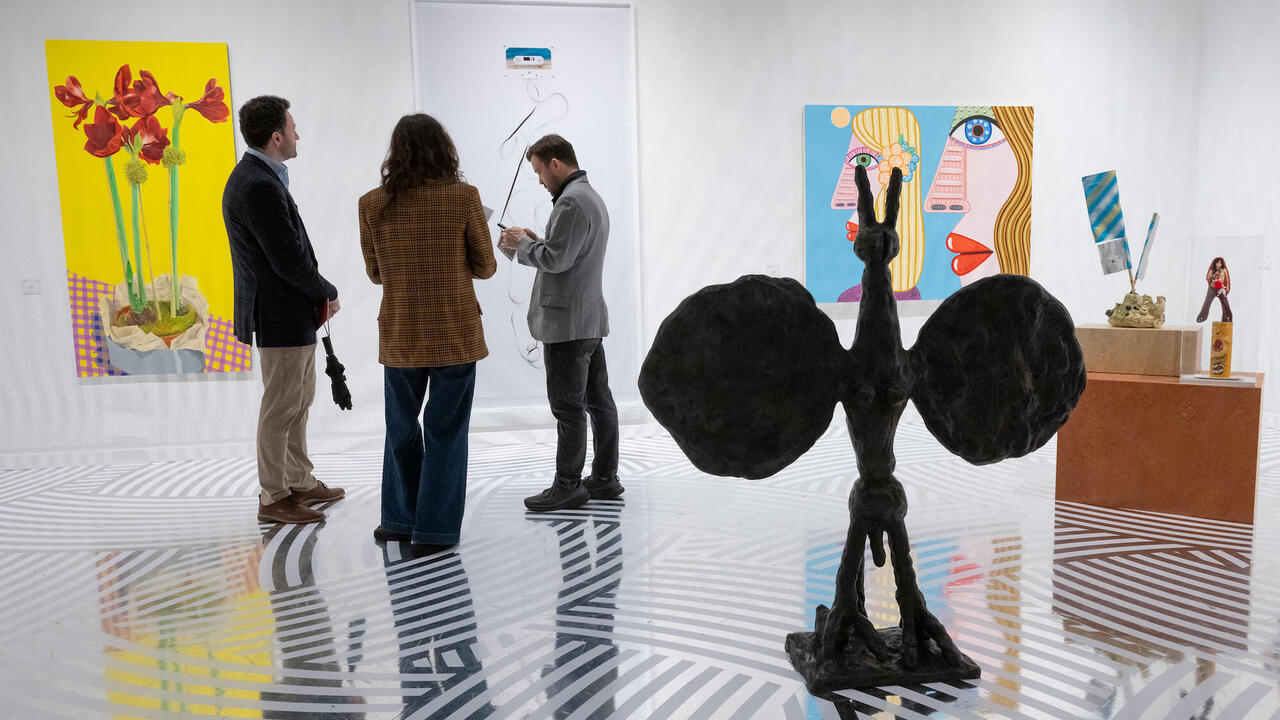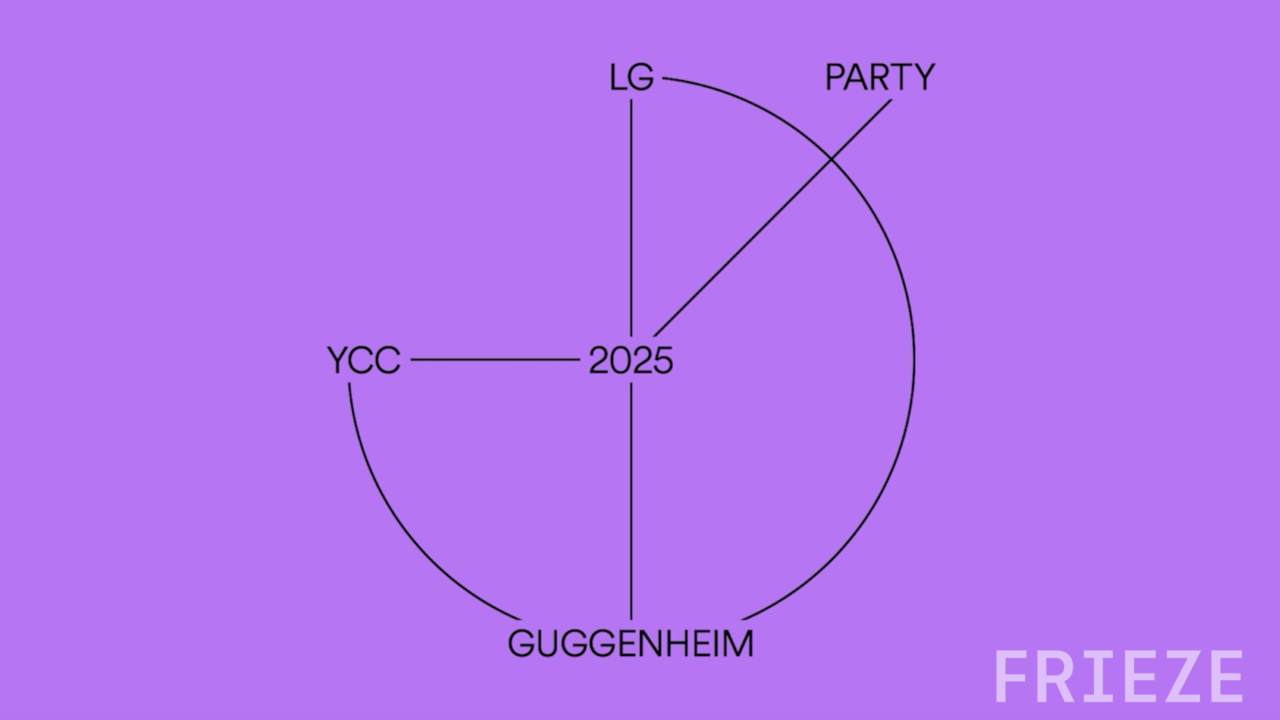‘Those Cracks Which Allow Things to Grow out of Them Are Interesting to Me’
As her commission for the first Frieze Artist Award in New York is unveiled, Kapwani Kiwanga speaks to curator Adrienne Edwards
As her commission for the first Frieze Artist Award in New York is unveiled, Kapwani Kiwanga speaks to curator Adrienne Edwards

In 2018, Kapwani Kiwanga was selected as recipient of the first Frieze Artist Award at Frieze New York 2018. The Paris-based artist proposed to realize an open-air installation exploring freedom of movement and architectures of exclusion. Curated by Adrienne Edwards of the Whitney Museum of American Art, the Frieze Artist Award forms part of the fair’s non-profit program and is supported by the Luma Foundation.
Adrienne Edwards: You studied social sciences, and in particular, anthropology. I’m interested in how these fields or their methodologies have influenced the kind of research impetus in your work.
Kapwani Kiwanga: They definitely have. I think research is something I enjoy doing, as an act. Making is something that I like as well, but research – I get really excited about that.
AE: What does that look like for you? What does it entail?
KK: The ideal is me going into a place where I can open up a box that hasn’t been opened for a while, and looking at archives that people may not have looked at, at least for some time, or spending time in a library. But it also means going out and chatting with people. So if it’s a particular history that I’m interested in – I’ll go to sites that hold that history and talk to people and get a sense of how they remember it, or [talk] to people [who] were actors in a moment.
So [my research often entails] meeting people, but [it] also [involves] being with books and articles – ideas. I engage with the ideas first, and then I go out and meet people to open those theories out and make them more grounded in the lived world, so different knowledges or languages to speak about history are in dialogue. I think anthropology is somehow always with me in a couple of ways. Partly because it was such an uncomfortable tradition to be studying – because of its history – but also, the complexity of it – which happens in life all the time – is that it was also the only place in the university where I felt I could look at cultures, histories, and experiences that were not only “occidental” or “Western.” So it was this conundrum of studying in a tradition that is a partner of colonialism – an enabler or forerunner of colonialism – but it was also a place where I could get closer to people and histories that were of interest to me. So that’s something I navigate constantly (I think a lot of us do). So that’s always with me – the difficulties of that formation or education, but also the construction of archives.
AE: Because history is something that is so eminent in your work, what do you tend towards in terms of histories? What are some of the central narratives or events that have really preoccupied you thus far? And have you seen them shift over time, or do you feel like there’s been a kind of consistent concern that you’ve been mining in different ways and from different perspectives?
KK: I think there are some things that are consistent. There are two threads of inquiry that run through my work. The first would be belief, and the other one – which is very nebulous – would be histories that are not heard enough. These relate in some ways. Belief, for me, is very broad, and can range from religious to spiritual to political to ideological beliefs…it’s a spectrum, right? It’s just one of these forces that motivate us as individuals and as communities – believing in something and acting out of that belief. So we create cultures out of that, we create objects out of that, we create wars out of that, we create violence out of that. Belief is a core interest for me, and that harks back to social sciences but even more so, to comparative religion. I think one can sense that in my work. And belief also touches on philosophy, right? It’s a philosophy which is not always seen as such. For example, when I was in Benin, looking at the roots of voodoun, I was exploring that as a philosophy, particularly with Ifá and Ifá divination. Coming back to my background in anthropology, this idea of belief engages with philosophies which are non-Western (although one must ask why it is that these philosophies are not always recognized as such).
And the idea of less-heard histories is something that is important for me to explore for my own person, to be able to navigate through this world. I think as a younger person I was looking for alternatives, things that I had not seen broadcast. I sought these out through the ways I choose to live – traveling, meeting different people, creating communities. I wanted to share alternatives – those things that were not widely represented or that had platforms or the means to be heard more widely. I think this thread feeds back to the first one I mentioned, the idea of belief. Having these examples of past histories, of resistance, of unheard or less-heard stories speaks to a belief that people create things regardless of being recognized; just out of necessity. So this feeds into the idea of belief: believing that one can circumnavigate certain structures which are not healthy for an individual or for a community. Those cracks which allow things to grow out of them are interesting to me.
AE: I’m really intrigued by the fact that you use the term “belief” instead of something like “mythology.” It would be interesting to think around the distinction between those two things, only because, I think about Glissant’s work concerning history with a capital “H,” and how that functions as an authorized mythology. Whereas, myth has a completely different kind of function in relation to how we experience culture on a vernacular level; it has this power to operate on an almost subterranean level, right? And that because it’s not written, but typically circulates orally or is embodied. There’s something interesting here (that maybe we can’t resolve, but I’m interested in thinking it through) about different modes of embodiment.
KK: Exactly. It’s funny how the body has, for me, up until now, come through language. I do some performance, primarily lecture-performances, which are based around orality. My physical body in space is always mediated through my voice, that’s how I mark a space or hold a space, at least that’s how I’ve worked up until now. I see mythology as another coded language, another register, or stylistic footprint. And, pedaling back to anthropology, one of the constructive things anthropology created – and that I’ve found feeds into my practice – is the reflexive opening up of text, where scholarly texts were written in a more experimental style. I found that quite stimulating.
AE: Like in the 1960s?
KK: And the ’70s. There was a plethora of writing forms; an openness. For me, mythological language is one register which operates individually on one – perhaps subterranean – level, but it also occupies another level between people and groups. Political language may be another one (this too can be mythological). And all of those different registers come together in this idea of belief, right? So I think the mythological is probably speaking more to a spiritual or a symbolic idea that can operate in different ways. Myth is very linked to ritual – like daily ritual, or something that’s linked to equinoxes and cycles in the natural world, or through life or societal milestones.
AE: It’s a kind of sustaining force.
KK: Yes, and it speaks to a time before (well, “time before”…I don’t really adhere to that organization of time). If we go back to voodoun and other cultural expressions – languages were created specifically for a ritual. So there is a coded or secret language which is used only for that. You need to learn this language and of course learning the language is a physical thing too. We know about the plasticity of the brain, and how different paths are created through learning a language, so how does that readjust your brain? The language that one uses changes how you see. There are other artists who have focused their work on language. This is not my focus, but embodiment up until now has come, for me, through language. But then there’s something just in being in a place; going to different places that interest me historically, socially, politically, and being able to be there physically – it’s another way of creating experience or resonance from a place. This occurs beyond language.
AE: That’s amazing, it’s great, you’re right on the path. It’s interesting, you talking about language, and these different modes of language, and even containers for its expression brings me to a question around visual language. Because you work in many different ways – video, performance, sculpture, installation, painting – how do you know when an idea needs to be expressed in a specific form? Not to think about it in a binary way, but I’ll pick the extremes because I think it illuminates something. On the one hand, you have these really beautiful, minimalist, abstract works (in the kind of traditional sense of thinking about Donald Judd, Anne Truitt, that kind of concern for color and form), and then you have your video works, or your use of flowers, like the way a flower or an arrangement of flowers can stand in for something. I’m interested in how you determine what forms your visual language takes in relationship to these ideas. (This may also be a question about opacity, and the way opacity functions in your work.)
KK: I mean, it’s a lazy answer somehow, but it kind of comes to me. I don’t want to reproduce this idea of divine inspiration, it develops, I think; I don’t know the direction, going into it. I’m with my documents, I’m with people, I’m listening to people, I’m reading people’s ideas, and there will be a moment where there will be a key that just opens things up for me. And that can happen sooner, although usually, it’s later than I’d hoped. The history or the material that I’m wading through presents itself and I’ll know that there’s a history of that actual material that also is there.
With the flowers, it’s this idea of really trying to look at history through the non-human, for various reasons. To speak very specifically about Flowers for Africa – I was looking through archival images of independence ceremonies, or negotiations that lead to African states becoming independent or becoming new countries or reconfigured countries. And I realized that I’d seen a lot of these kinds of images before – images, mostly of men, shaking hands at particular moments (particularly the ’60s and ’70s), and there was an aesthetic of representation around that time which I wasn’t interested in reproducing. I was thinking: what could be another way to think about these moments? There were probably other ways to remember that independence, or moment. Again, it came around to this idea of the unseen or unheard. So in the images, I chose the flowers that acted as witnesses to that transition of power. They were often nearly out of frame, so it’s a question of cadre and hors cadre (frame and out of frame). This speaks to my interest of what’s treated as not central.
And then there’s the flip side of that with other works, where sometimes there are the central narratives that we know, and that I think we need to think about again in a different way. So although not knowing it at the time, it is a little clearer to me now. It’s abstraction – taking out these flowers and allowing them to stand in as one thing – because I think representation doesn’t always push one enough to think differently. But the same (and different) strategies happen in my linear paintings when I’ve taken colors from historic architectural sites and used them to make minimal paintings.
One of the important points for me is how one feels in front of or next to or around a space – so seeing those flowers wilt away, or knowing they’re going to wilt…I imagine myself or the audience in front of that situation.
AE: And when you install them, they’re fresh flowers.
KK: They’re fresh flowers.
AE: And then over the course of time they die and decay in the installation, and are left there to do that.
KK: And then they’re returned to the earth if they can be.
AE: So is there an afterlife once the show ends?
KK: There’s a protocol which states all organic material should be composted. There is often that element of care in my work. In some past work, there have been plants which are there to do a lot of things – similarly to the flowers – to stand in, to reference, to open up to other peripheral or maybe non-human witnesses, or forms of knowledge. But they demand that we take care of them. So people have to engage with the work in a really simple way: they have to water it, they have to keep the insects from destroying it. The plants grow, and then they’re distributed after the exhibition. I try to push against seeing and walking away – which engenders gaze-come-possession. I think it goes back to something that we’ve talked about, that the image itself is not enough. So, there’s an experience that I want people to have, a feeling, which is embodied.
AE: That’s very interesting because it points to something I wanted to ask you about in relation to the proposal for Shady, for the artist award. When I saw that work, it made me track back to a different element of your work, which is about this question of eliciting something from the viewer. This relates to the kind of sensual dimensions of the work of art. If we go back to the core tenets of aesthetics and what aesthetics are, it’s just about a sensual encounter, right? And so I was thinking about this in relation to the flowers; I was thinking about the role of time and duration as a kind of material force in the work that is not always obvious.
KK: Yes, but it’s there.
AE: I think the African flowers somehow makes it clearer, or more explicit, but it’s in all of these works.
KK: Yes, time is a material in and of itself. Perhaps it comes from working with my first creative medium; documentary film. In film, you work with rhythm and time in that way. In my installations, there are sometimes audio pieces, and I also try to craft time in the space itself. There’s a historic time, of course, there’s a past, our present, and often a future that’s somehow imagined, which is talked about through the documents of the past, imagining where we are now. So there’s an over-folding of time which I often try to bring in. And that again goes back to the questioning of whether we construct time as linear or not. I would not say there is cyclicity, but there are a lot of different inter-foldings of time.
AE: Shady seems like it’s an expansion. Have you worked on a sculpture of this scale before?
KK: No, not of that scale.
AE: So it’s thrilling in that regard.
KK: Absolutely.
AE: But in some ways, the experiment with the material – at least, some aspect of the material – started with an exhibition you did at Goodman Gallery. Can you talk about how you came to this material? What it looked like then as compared to what you have planned for the public art, large-scale version of this idea?
KK: So this is again one of these things that we’re working on in ways that we’re always continually evolving.
AE: Was that your first show with the Goodman Gallery?
KK: That was my first solo show with them, I’ve done a couple of group shows with them before. The show was called ‘The Sun Never Sets’, and for that exhibition in October past I was thinking about land and the colonial project. I was thinking about settler colonialism, the appropriation of land, particularly in South Africa, how in different townships access and division of land was created. And I was working through these explorations through different works. But the agricultural dimension of colonialism really came back at one point, and I wanted to address that. The shade cloth speaks to something I’m interested in looking at, the colonial project as a global experience. So not just referring to South Africa, of course, but I was thinking about agriculture in South Africa, and that material was able to speak to that, as a contemporary technology that’s used to continue a longer project, which has been taking plants, organic material, from one place to another, creating microcosms in which they can exist.
AE: Extracting.
KK: Extracting. But agriculture is about unnatural production, right? So that’s what it is. We put in extra water, which in and of itself is unnatural. But I don't want to make this about some kind of binary – natural or unnatural, good and bad – it’s not as simplistic as that. I’m interested in looking at how different technologies are used to enable this on a scale which itself enables capitalism and capitalist extraction of resources from one land to another. Wardian cases from the Victorian era (if I’m not mistaken) are similar; it’s the same mindset, but our technology has changed, right? I’d seen shade cloth used in Canada. I spent part of my childhood in a city where the larger region was quite agricultural. On a return visit a few years ago, I was driving around, and I saw these large black shade cloths, and when I asked what they were, I was told it was ginseng. I was surprised: ginseng, what’s ginseng doing in southern Ontario? And it just made me think again of the land we were on, particularly in that area in Canada. There still are ongoing tensions between the First Nations community there, the Six Nations in particular, and the proposed developments that have happened in the Haldimand area. And so the use of this shade cloth recalls different things – the technology may have changed, but the gestures, the acts, the mindset have not. So that was my interest in the actual material – it opened up all these things for me in talking about the worldwide experience of colonialism. I’d chosen South Africa to work with the black color of the shade cloth, because, politically, I think it means something very, very strong there (especially in this white gallery space), and so I wanted to work with black in that context. And the pieces were all on the wall, so they were supported by a wall and they were coming off the wall with these very simple brackets which allow them to kind of lean off the wall. So it creates a space of volume by using the wall as a surface, or as a support. But they’re very lightweight, so there’s this kind of tension between a volume that is quite substantial but is also very fragile. That happens in my work in different ways, through the flowers or other things.
AE: Do you think of them as wall works? Sculpture? Painting?
KK: I call them wall works. They haven’t come off the wall enough to be sculptures, yet they are somewhere in between, right?
AE: Yes, they have volume. In terms of a way of being able to navigate around them…
KK: You can’t do a 360 though.
AE: No, you can’t do a 360.
KK: You could do a 180.

AE: You could definitely do a 180. It reminds me of Sol Lewitt’s early experiments from the ’60s, like ’61, ’62. When you looked at that work, if you were standing directly in front of it, it looked two dimensional, but the moment you bent to the side, you’d realize it was volumetric, that this thing was extending out towards you. So this is very interesting in terms of playing with perception.
KK: That’s definitely what was in that. If you turn a couple of degrees around the fabric itself, the weave changes, it captures the light in a different way. Over-layering (which I have worked with on with some pieces) can sometimes cause a moré effect, so there’s this interesting layering that can happen, and opacity and visibility is part of that. So, the difference between the first wall pieces in South Africa and what we’re proposing for Shady is this ability to have a 360-degree experience. We're working with the idea of changing perspective and positionality – wherever you’re positioned will change how you see the work. That’s something that I’m interested in working with generally, so that one thinks about their perspective and how it can change. It pushes against a binary of one side or another; one can be on both sides.
So, for the Frieze Art Award, I was interested in working on this idea of the 360, being able to walk around, to navigate in a different way and on a scale which evokes a wall but is also fragile. One’s body is confronted with what appears to be a barrier, but the porosity of the material calls forth hope or a belief that there are also ways to filter through. One can see them as huge filters, right? They filter out light, but they let some in. One sees the structures that hold the material itself. These frames are made of a solid material; they’re steel. It’s industrial, it speaks to the large scales of visible borders and barriers and hints to those that are invisible, but it’s undeniably a rigid structure to encounter. Then you have this material, that if one really wanted to push through it, they probably could. But that’s also punctuated by moments in the design where open spaces appear. So there are these different levels, maybe evoking images of infiltration, passing through or circumnavigating. One can circulate around the whole thing, and also walk between different layers of the fabric; one can circumnavigate this whole structure, bypass and go through. So it’s a formal call to these acts which I hope people will enact in different aspects of their lives if they so choose. And the color was of interest to work with as well, not just stick with the black as I had in South Africa. Beyond a question of layering and opacity was the question of how the different colors interact with one another, what they become when they’re layered on top of each other.
AE: What colors will you use for the artist award commission?
KK: I’m limited to what colors I can use. It’s important to note that the shade cloth I am using is used for agriculture. There’s a red and a blue, which are each meant to filter out different parts of the light spectrum to promote growth. This technology creates environments which allow for continued extraction from the land through monocropping. So one can see this as another place where capitalism and colonialism intersect.
AE: What you’ve proposed is also very phenomenological. The height is four meters, so one has to comport oneself in relationship to the object. You experience the work in relationship to its scale, which can be overwhelming. Yet, perhaps this ability to see through it proposes something else. This is a recurring tendency in your work in terms of phenomenology and the relationship to the body.
KK: I’m interested in materials which are familiar yet somewhat unknown. So, with the shade cloth, we think we’ve seen it before, because of similar weaves used in construction sites or elsewhere, but this fabric is specifically used in the agricultural sector. Moving through the city or traveling to more rural areas, I observe things happening around me and materials used on the ground, so my choices of materials are not purely coming from an interest in matter or form (although I am sensitive to these aspects too). I’m primarily interested in materials because of how they are used socially and historically.
AE: I think the only other question I had was about the extent to which the research you’ve done – or even experiences you’ve had like traveling to Tanzania – has influenced the way in which you’re thinking about Shady or this body of work. If there’s a correlation there?
KK: I think when traveling to Tanzania I became interested in another material I have since worked with: sisal. Traveling through rural Tanzania (where part of my family still lives) and seeing large plantations of sisal, they’re quite impressive, I mean as an aesthetic experience, driving through rows and rows and rows, it’s monumental. But more interestingly, if you look back at the history of that material, one can trace parts of the political and economic history of that particular country. And again, sisal and shade cloth both remind us that settler colonial land use functions by taking land from which to extract for commercial capitalist ends.
Kapwani Kiwanga (b. 1978, Hamilton, Canada) lives and works in Paris France. Kiwanga studied Anthropology and Comparative Religion at McGill University in Montreal before taking part in the program La Seine at the École nationale supérieure des Beaux Arts de Paris. Kiwanga’s work was recently on show as part of ‘Stories for Almost Everyone’ at the Hammer Museum (Los Angeles, 2018) and in the 2018 edition of the Glasgow International (2018). Other exhibitions include solo shows at Museé d’art de Joliette (2018), Esker Foundation Contemporary Art Gallery, Calgary (2018), The Power Plant, Toronto (2017) and South London Gallery (2015); and group exhibitions at Tate Liverpool (2017) and Portikus, Frankfurt (2017), among others. Kiwanga’s performances have been presented at Documenta 14, Athens (2017), Momentum 9, Oslo (2017); FRAC, Champagne-Ardenne (2015), Tate Modern, London (2014) and Centre Pompidou, Paris (2014), among others.








